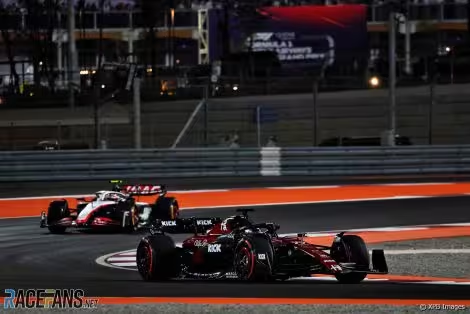After years of F1’s scriptwriters limiting him to a supporting role, rather than a main character, Valtteri Bottas could hardly have had a better opening chapter written for him after moving to Sauber – then Alfa Romeo – in 2022.
While Kevin Magnussen stole much of the spotlight by finishing one place ahead of him in the opening round in Bahrain, Bottas’s sixth place was still an outstanding result for his opening race with his new team. And with rookie team mate Zhou Guanyu claiming tenth on debut, Bottas was thrilled with the nine points scored by the team at the first attempt.
“It is a great way to start the season,” he said. “Everyone did a good job and we are going in the right direction.”
That opening race was supposed to set the tone for Sauber’s new era with its all-new driver line up. And it appeared to do just that, at first. Through the first nine rounds of 2022, Bottas and Zhou combined for over 50 points to sit sixth in the constructors’ championship – which is where they went on to finish after beating Aston Martin on a tiebreaker.
However, over the last three seasons, Sauber’s status has meandered from midfield mavericks to middling to moribund. Culminating in in today, October 8th, marking one full calendar year since the last time that Sauber came away from a grand prix with a point.
Since the 2023 Qatar Grand Prix, when Bottas and Zhou scored a double points finish in eighth and ninth, neither of the pair have finished inside the top ten even once in the 23 grands prix and five sprint races held since then. Over that same period, every one of Sauber’s nine rivals have scored at least 20 points, with Williams having the next-lowest total with 21, ten fewer than Haas.
After a positive performance at Losail, Sauber’s form varied wildly over the final five rounds of 2023. Following an average showing at Circuit of the Americas, both Bottas and Zhou reached Q3 in Mexico – only the second time the pair had done so over 2023. But despite a promising starting position, both drivers faded through the race to finish well outside of the points.
That was followed by a double Q1 elimination at the next round at Interlagos, but the race itself looked far more promising. That is, until both cars suffered separate overheating problems that forced them to abandon the race to avoid causing severe power unit damage to their cars. Further frustration followed in Las Vegas, where…
Click Here to Read the Full Original Article at RaceFans…

